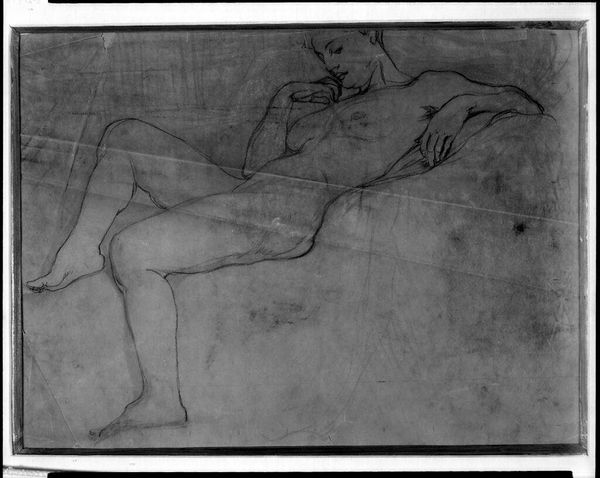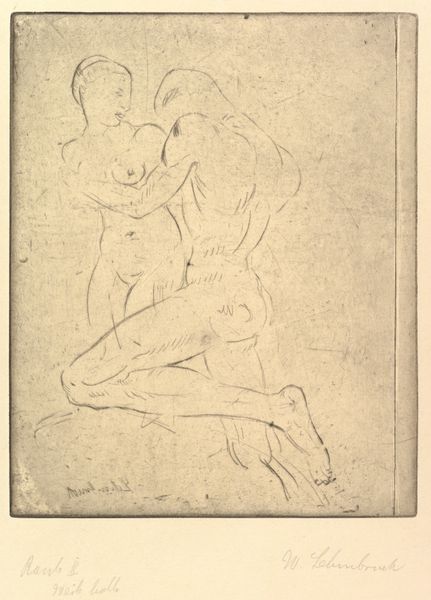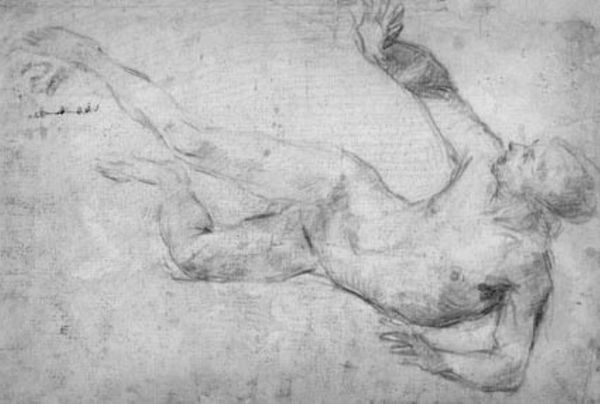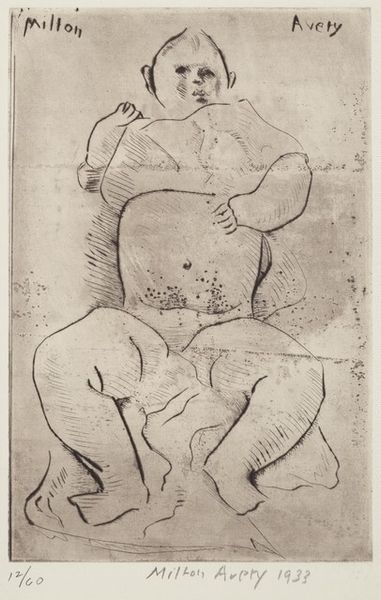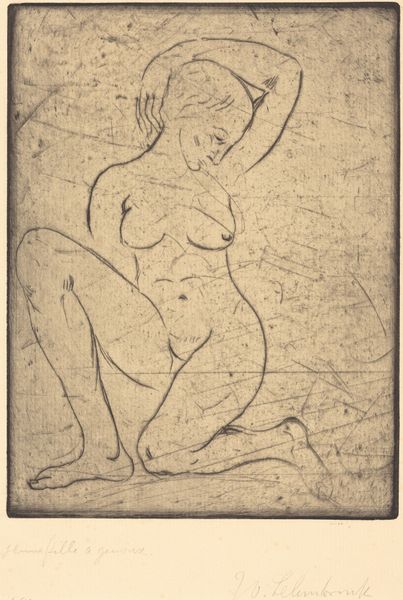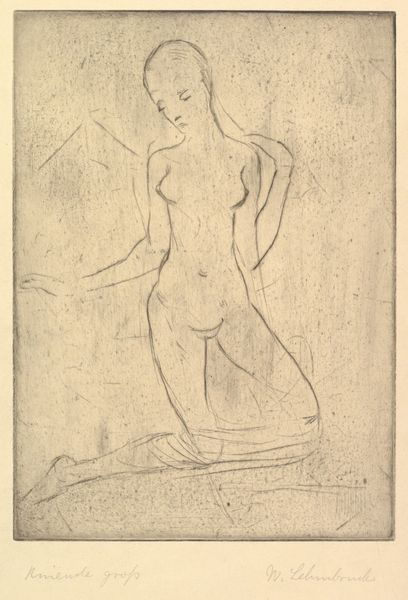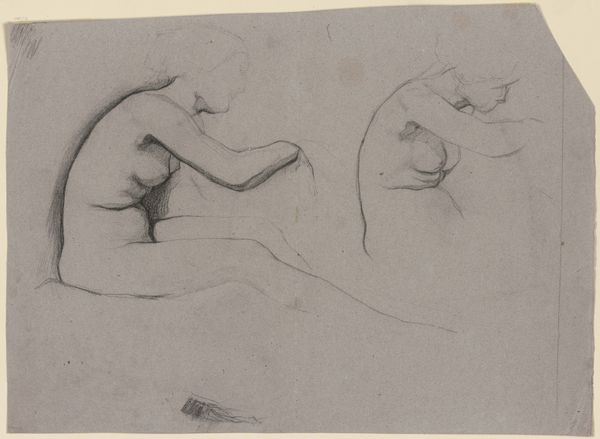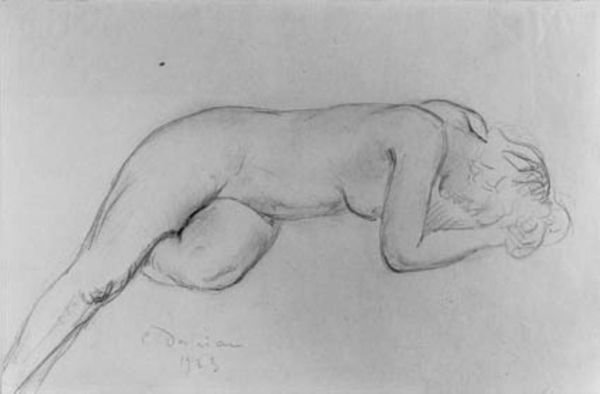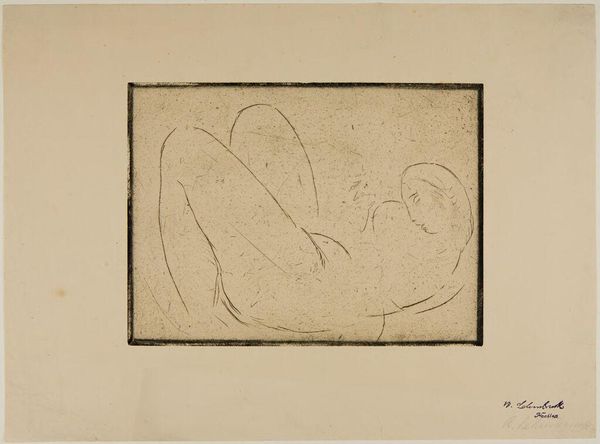
Ruhendes Mädchen (Meeresstimmung) Possibly 1910 - 1920
0:00
0:00
print, etching, intaglio
# print
#
etching
#
intaglio
#
german-expressionism
#
figuration
#
expressionism
#
line
#
nude
Dimensions: 5 3/16 x 7 in. (13.18 x 17.78 cm) (plate)8 7/8 x 11 1/16 in. (22.54 x 28.1 cm) (sheet)
Copyright: No Copyright - United States
Wilhelm Lehmbruck made this etching, Ruhendes Mädchen, which translates to Resting Girl, sometime before 1919. There’s something really special about the way he’s used line here, it's so delicate, and the way he’s built up these layers of marks to create this soft, hazy atmosphere. It makes you think about artmaking as a process of building up an image bit by bit, almost like a memory. Looking at the surface, you can see the texture of the paper and the subtle variations in tone. The lines are fine but firm, they create this sense of quiet intimacy. And there's this one area, just behind the girl's head, where the lines are a bit more dense and chaotic. It’s like a little storm of marks that draws your eye and adds depth to the composition, and that creates a tension between the calm of the figure and this other more chaotic energy. You know, when I look at this piece, I can’t help but think of Paula Modersohn-Becker, another German artist who was working around the same time. They both had this way of capturing the essence of the human form. Art is always an ongoing conversation, right? We’re all just building on what came before.
Comments
minneapolisinstituteofart almost 2 years ago
⋮
Trained in his homeland of Germany, the sculptor Wilhelm Lehmbruck was attracted to the work of two French sculptors often seen as polar opposites: Auguste Rodin and Aristide Maillol. He synthesized the spirituality and structure of Rodin with the linear grace of Maillol to produce his own quiet, introverted works. In 1910, he moved to Paris, where he would remain until the outbreak of World War I. There he fell in with other international avant-garde sculptors, such as Constantin Brancusi, Giovanni Modigliani, and Alexander Archipenko. About the same time, he began to make prints, which, like Recumbent Nude, reduce the form to its bare essence.
Join the conversation
Join millions of artists and users on Artera today and experience the ultimate creative platform.
